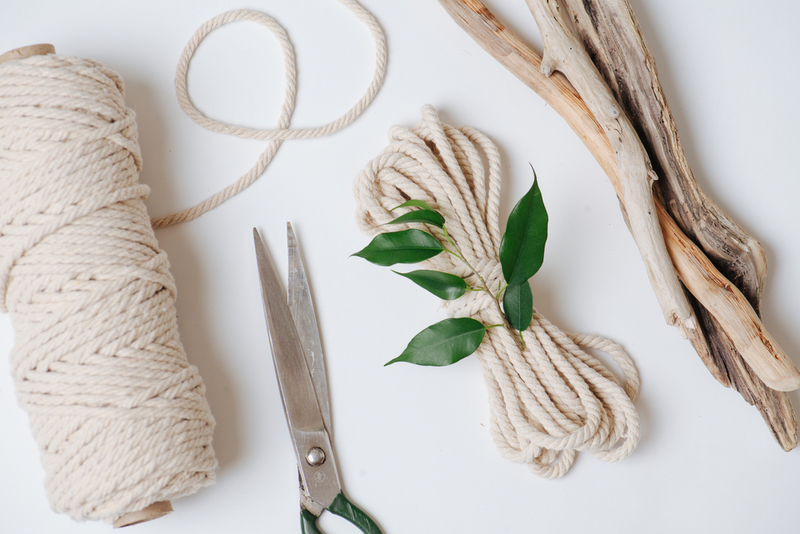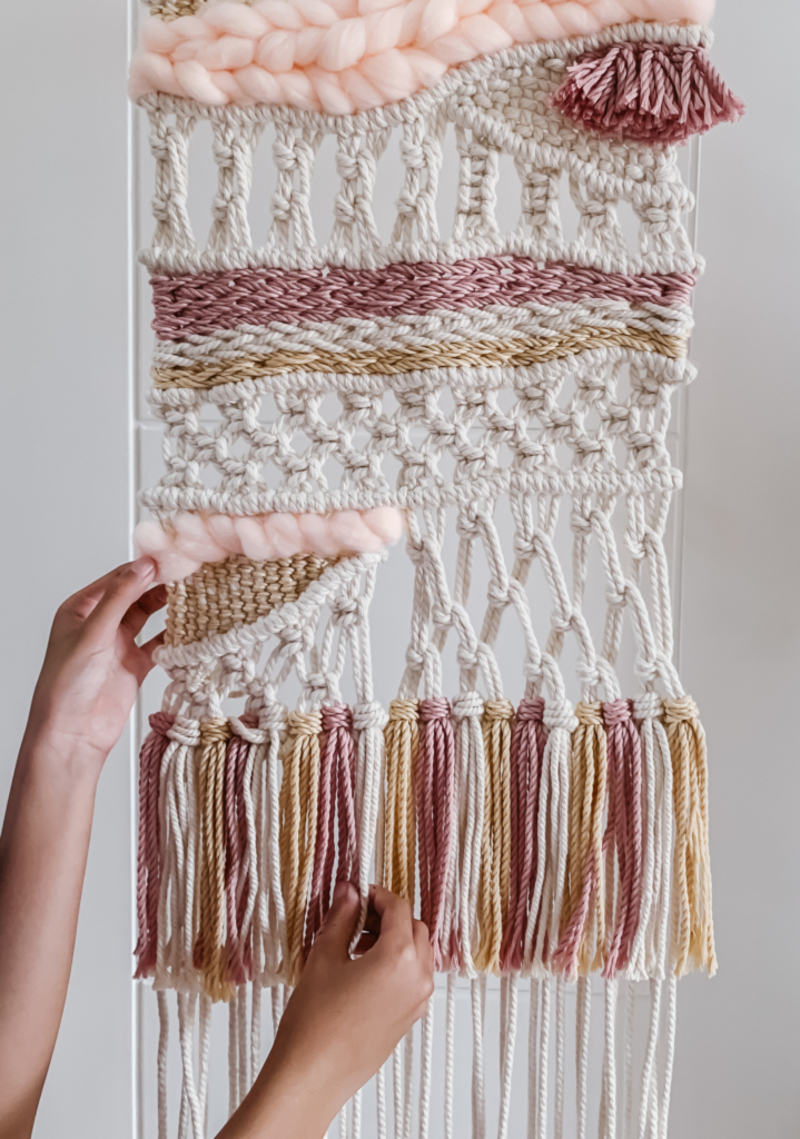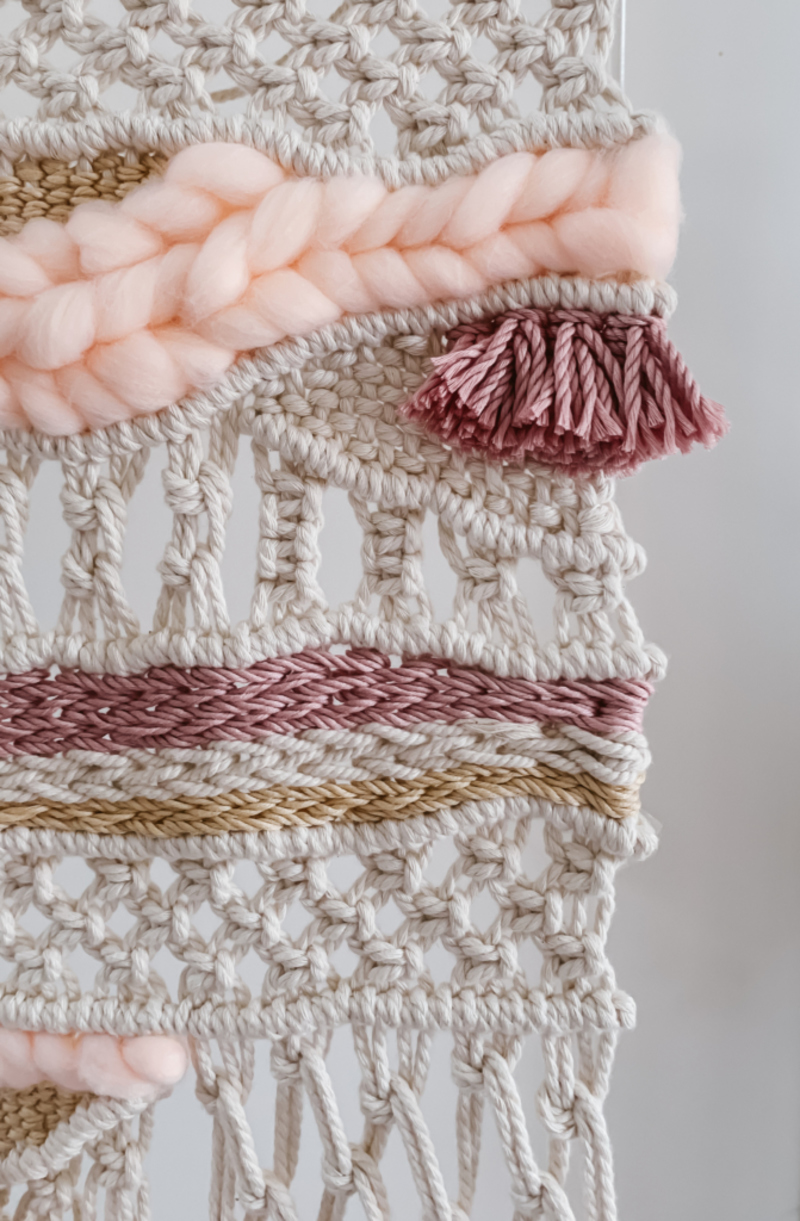Wish to have a unique wall hanging? No need to spend much or have one shipped from abroad. Do it yourself with yarn and cardboard. The project is simple enough for kids to follow. Use only 3 weaving styles which you can mix up to achieve customized effects. Create a fashionable loom from cardboard.
You’ll Need:
- scissors
- cardboard
- tapestry
- needle
- ruler
- painter’s tape
- Colored yarns (At least 12”)
- thin wooden dowel
- Stick for hanging (at least 12” long)

Step 1
You need to cut out a rectangle cardboard measuring 12″ x 18″ that must be sturdy. Its short ends must be reinforced by a painter’s tape. From the long edge, an inch in, make a snip for every ¼” into the taped area. It doesn’t have to be uniformly measured. Make sure to cut until the edge, stopping an inch from it, and target an even number of cuts. Repeat process on the other side.
Step 2
Wrap the loom using a thin yarn; taping the end of it towards the back of the loom. Pull it through the first notch from the top edge (loom’s front side), inserted down into the bottom edge’s first notch, pulled around the back to the top edge’s second notch. Continue the sequence ‘til all the notches are done. Make sure it is tight enough and the other loose end must be taped at the loom’s back.
Step 3
We suggest inserting a dowel in between warp threads (threads of the loom) to separate them and prevent skeins. This way it will be easier to thread yarns especially over and under, alternating sequences of threading, in starting a few rows of basic weaving. Create a tabby weave by threading a yarn (36-48”) into a tapestry needle. However, using a needle is optional. You may use a thicker yarn and pull its end with your own fingers. Pull the yarn through warp threads, under the first and over the second, pull it in an alternate pattern all the way through. Leave a tail that may be woven in at the end.
Step 4
Draw the weft yarn towards the other direction, but this time go the opposite way of the other yarn, over where the other went under, and vice versa. Pull the second line, but don’t make it tight. Let the second row meet the first. If the sides develop a bit of pulling in, loosen it a bit before pushing it down. Like the first run, pull the dowel and move it back across the loom. Again, after pulling it through, push the row to let it meet the other rows below. Go on with the process until you have a minimum of 4 rows of tabby. Make sure to leave a tail again that may be woven later. Step 4: Rya Knots In creating the fringes, a row of rya knots must be tied to the warp threads. We will need to prepare the strands, cut a good number at around 28″ in length. There are other ways, but the easiest is to wrap the yarns from hand to elbow repeatedly. The bundle from your arm pulled, cut through one side of it.

Step 5
It is nice to have a thicker fringe. Use 2 strands or more. Hold them together. Now the center of the strands must be laid over the top of the first 2 warp threads. The left end of the strands must be tucked under and then through the left thread, and the right end of the strands must also be tucked under and then through the right thread. Between the first 2 warp threads will jut out the tails of the strands. For the knot to tighten, pull the bottom of the strands. The same process must be repeated until the fourth warp threads. Across the bottom, proceed with adding more knots. Step 5: Continue Weaving Continue adding tabby weave by following the instructions in step 3. Add more variety, if you wish, by using different textures and your favorite colors. Complete it with the tabby weave, or how about adding new layers of texture? You can do that by using the Soumak weave, which will be explained next.
Step 6
To make the Soumak weave, which looks like a braid, you will need a thick yarn for better effect. If you don’t have it, try holding a bunch of strands instead. Starting from the left, pull the weft thread under the first 2 warp threads. Pull this over and behind the next 2 warp threads. Continue to pass it to the right and passing around pairs of warp threads, then go under to the left and you will reach the last pair of weft threads.
Step 7
Around the final 2 warp threads, wrap the weft threads around them twice and then start the soumak weave in the other direction (opposite). Guide the weft yarn over and under the 2nd pair of warp threads and pass the tail to the right. Continue passing the weft threads (around pairs of warp threads), over to the left, and then, under to the right. Continue procedure until you reach the final pair of weft threads. Wrap it around the final pair of warp threads. Again, after cutting the yarn, don’t forget to leave a tail to weave in for later. Step 7: Finish Weaving You may continue with the tabby weaves once the soumak rows are done. You can alternate tabby weaves with a soumak. However, the final rows of your weave work must be in the basic tabby weave. You may stop it once you near the top of the loom.
Step 8
Cut the threads on the back of the loom, towards the bottom half, and gently take the warp threads from its slits.
Step 9
The first and second threads must be tied together in a square knot, starting from the bottom warp threads. The square knot must be tight enough and tied to base of the weave work. Continue down throughout the bottom edge ‘til all the warp threads are securely tied. Repeat same process across the top.
Step 10
All the loose threads must be tucked behind your work. To make this easier, you may use a tapestry needle or a crochet hook. To keep work clean, cut the excess loose threads once it’s been run through some rows at the back of the work.
Step 11
Create overhand knots. This is necessary so your stick can be attached to your weave work. Tie the first two warp threads into an overhand knot. Leave a loop big enough for the stick to be inserted. Create more loops at the top and insert the stick. Make necessary adjustments to make it hang straight and evenly. Tie another overhand knot as a stopper, do so across all the loops. Lastly, create a hanger by tying a yarn to both ends of the stick.
Step 12
Hang the weaving and decide which way you may want to trim the rya knot fringe. Scissor it straight, or cut it to a point. Be creative.

Step 13
This project is simple enough for children to tackle, yet interesting enough to entice even the most experienced crafter. You will learn how to make a very simple, yet effective loom from cardboard and three basic weaving techniques that can be mixed to create myriad stunning effects. It’s time to flaunt your work. The weaving will add Boho ambiance to your chosen space.